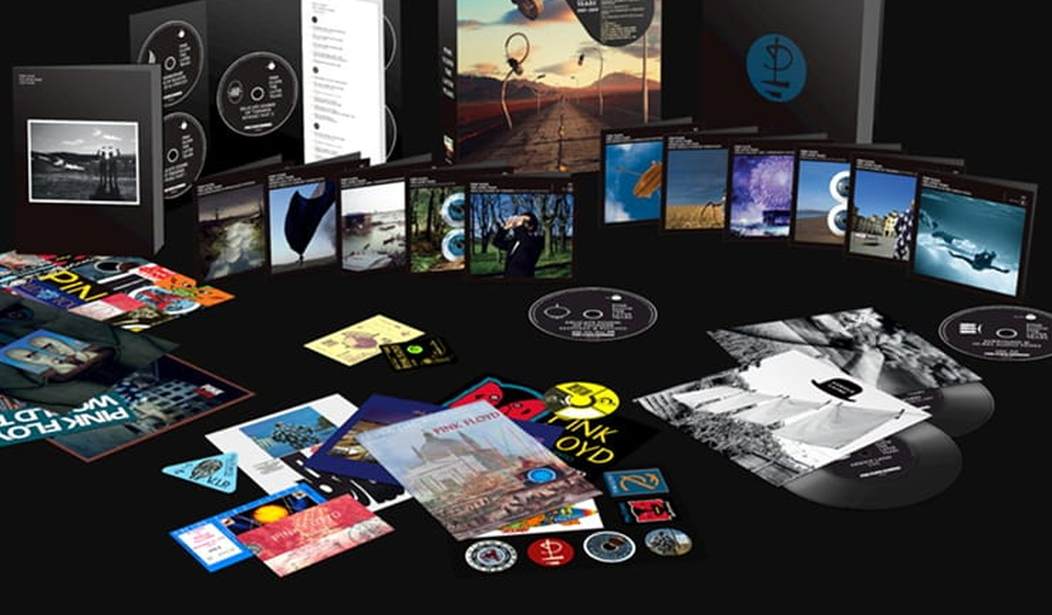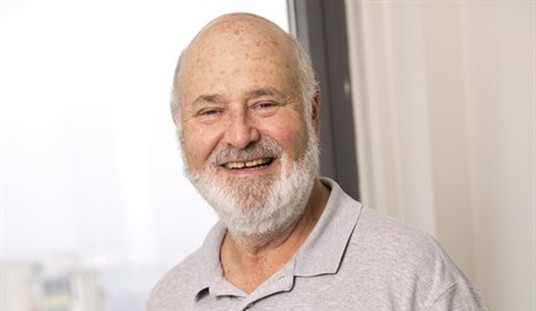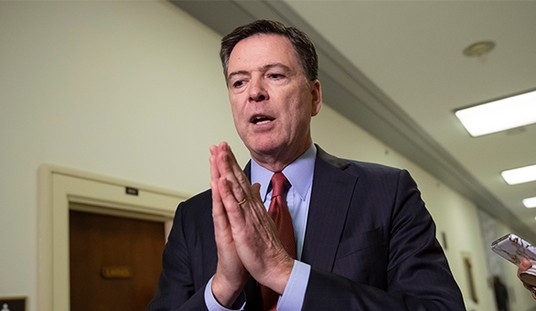The mammoth new Pink Floyd box set, titled The Later Years, which contains five CDs, six Blu-rays, five DVDs, and two 45 RPM vinyl singles, and a treasure trove of photos, posters, tour book reproductions, and other memorabilia, focuses on their output from 1987 onward. This was the period when the band was led by guitarist/vocalist David Gilmour, after an acrimonious departure by bassist and vocalist Roger Waters, who had become the band’s primary songwriter by the mid-1970s. As befitting an 18-disc(!) box set, there’s a lot to dive into, but let’s set the stage by going back in time a bit.
On the Turning Away
While MTV’s debut in 1981 gave a new lease on life to the then-moribund record industry, the first half of the 1980s was a difficult period for the supergroups of the previous decade. Keith Moon died in 1978, and while The Who gamely carried on for a few more years with replacement drummer Kenney Jones, they largely went dark after their 1982 “farewell tour.” Led Zeppelin broke up after drummer John Bonham died in 1980. The Rolling Stones toured in 1981 and ‘82, but were then fairly moribund for much of the decade, while Mick Jagger experimented with a solo career. On the other side of the pond, the Eagles broke up in 1980.
Whatever their torturous inner-band politics, in the public’s eye, Pink Floyd soldiered on as a group for a few more years, releasing The Wall as a mammoth triple play of double album, tour, and movie. In 1983, when Margaret Thatcher wouldn’t let Argentina capture the Falkland islands, Roger Waters, an ardent socialist, was so incensed by England growing a spine after its malaise-filled 1970s, that he reworked what would have been a soundtrack to accompany The Wall movie into The Final Cut, featuring remaining members Gilmour and drummer Nick Mason in supporting roles. (Waters had sacked keyboardist Rick Wright prior to the album’s sessions.)
The sessions for The Final Cut were among the most painful in the band’s history, and given the album’s title, many assumed it was the end of the line for Pink Floyd. In 1984, Waters released his first solo album, The Pros and Cons of Hitchhiking, and Gilmour released his second solo album, About Face. However, both discovered a hard truth: Pink Floyd spent the 1970s employing Led Zeppelin’s strategy of rarely giving interviews, disdaining the press, and promoting the band’s name, not the names of its individual band members. Thus, Pink Floyd had enormous clout among record buyers (their 1973 magnum opus, The Dark Side of the Moon, would remain continuously on the Billboard Top 200 album chart until 1988, a staggering 736 week run), but only die-hard Floyd-fanatics knew the names of their band members or cared about their solo works.
Signs of Life
As a result, in 1985, David Gilmour decided to dust off the Floyd name, recruiting drummer Nick Mason as his musical and financial partner, hiring Bob Ezrin, the producer of The Wall, and inviting Rick Wright to sit in on recording sessions for the newly reconstituted Floyd, but, at least initially, purely on salary, for legal reasons. Waters, who ruled the last two Floyd albums with an iron fist, and who believed that the band was “a spent force creatively,” was apoplectic over Gilmour and Mason’s decision. While the band recorded the following year on Gilmour’s houseboat, which had been converted into a floating recording studio, “The phone would be going every five minutes with this lawyer and hat lawyer wanting to know this and that,” Gilmour was quoted by Floyd biographer Mark Blake in his 2007 book, Pigs Might Fly. Eventually, sessions were moved to Los Angeles, “under the terms of Gilmour’s deal with Ezrin,” Blake writes. “On one level, at least, it was a relief. ‘It was fantastic because office hours are not in sync,’ recalled Gilmour, ‘so the lawyers couldn’t call in the middle of recording unless they were calling in the middle of the night.’”
In 1987, the Water-less Floyd released A Momentary Lapse of Reason, and booked what would be a two year-long tour of some of the largest football stadiums and concert halls in America, England, Europe, and even five nights in Soviet Union-era Moscow. That touring band would go on to play Venice on July 15, 1989 and England’s Knebworth Festival on June 30th, 1990.
Filming The Delicate Sound of Thunder
Pink Floyd’s 1988 concerts at the Nassau Coliseum in Uniondale, New York from August 19th through the 23rd were filmed in 35mm for the 1989 concert video, The Delicate Sound of Thunder. Those films were re-composited in HD and massively re-edited for The Later Years box set, and for many, this concert will be The Later Years’ real party piece. For years, Floyd fans have wondered why The Delicate Sound of Thunder has never appeared on Blu-Ray or its predecessor format, DVD. I kept my early 1990s laserdisc player in service largely to play my disc of the original version of The Delicate Sound of Thunder. Since HD didn’t arrive until the late 1990s, the original video of Thunder was released in the standard video format of the time, with a 4X3 aspect ratio. The Later Years’ massively re-edited version is now in a beautiful 16X9 high-definition format. Whereas the original had a smoky, slow-motion look like many 1980s rock videos, this version gives a much clearer look at the band on the stage.
And what a band it was. The three original Floyds were backed with a group of musicians whom Gilmour selected in part because of their youth and MTV-ready appeal. Though compared with the original 1989 video, there does seem to be a bit of a de-emphasis in close-up shots of back-up drummer Gary Wallis and backup keyboardist Jon Carin with the prog gods whom they were supplanting.
On the opening “Shine On You Crazy Diamond,” mullet-coiffed saxophonist Scott Page roars out the solo, with a spare sax strapped on his chest, just for good measure. “Signs of Life” from A Momentary Lapse of Reason begins with a haunting 16X9 version of the footage the band commissioned for the tour of a rower plowing down an English stream, with glorious colors above the water, and hypnotic shots of the murky undertow below it, visuals perfectly accompanying the equally hypnotic guitar playing of Gilmour introducing listeners to a new era of Pink Floyd, before the band roars into its signature song of that era, the prophetically titled, “Learning to Fly.”
All in all, this is a much better look of a band hard at work on the stage, and the huge audience they were performing to than its original version. But as with Peter Gabriel’s superb 2013 Blu-Ray Live in Athens replacing his 1990 concert videotape PoV, I wish a cleaned-up original version of 1989 The Delicate Sound of Thunder was also included. The two versions are that different in style.
After the emotional catharsis of “On the Turning Away,” one of The Delicate Sound of Thunder’s best contrasts is “One of These Days,” in which Gilmour sits at the edge of the stage, absolutely wailing on a Fender lap steel guitar, with Pink Floyd’s trademark pig looming menacingly over the audience with its glowing eyes. For those with surround sound in their home theaters, this is followed by a brilliant mix of “Time” from The Dark Side of the Moon, with sound effects of clocks and Nick Mason’s drum kit swirling around the back speakers. (Seeing Floyd in 1988 at Philadelphia’s Veterans’ Stadium, I was astounded by their use of surround sound in a football stadium, and this is reproduced brilliantly on the newly remixed version of The Delicate Sound of Thunder. And during the bass solos on “Money” and “A Momentary Lapse of Reason,” Guy Pratt’s bass guitar will make your subwoofer positively shake the room.
When planning the tour to promote A Momentary Lapse of Reason, lighting designer Marc Brikman was quoted by Floyd biographer Mark Blake that the Floyd’s goal was to “always to pull the last kid in the last seat of the stadium into the show.” The Blu-Ray included in The Later Years set goes even further – it puts the viewer on stage with the band.
Due to the many legal threats by Waters, as with the original 1989 version of Thunder, the end credits have the hilarious line “Original Pig Concept: Roger Waters,” due to the Gilmour-led Floyd’s use of Waters’ inflatable pig in the video. Any other meaning from that end credit…is purely coincidental, I’m sure.
The Great Gig in the Barge
On a separate disc are the band’s 1989 concert in Venice Italy, and its appearance at the 1990 Knebworth festival in England. The Venice festival has the option of surround sound, the Knebworth festival is in two-channel stereo, but on both, the videos are in the 4X3 aspect ratio, and likely upconverted to HD. While the music is as atmospheric as ever, these discs lack the visual grandeur of Delicate Sound Thunder’s filmed, 16X9 widescreen image.
At Knebworth on June 30th, 1990, Candy Dulfer, then at the peak of her popularity, thanks to the MTV-friendly video for her instrumental “Lily Was Here,” played sax. Clare Torry reprised her original impassioned, wordless vocal on “The Great Gig in the Sky,” with Rick Wright’s beautiful piano work, and David Gilmour on the lap steel. Michael Kamen, who arranged The Wall and the Final Cut, and one of the few musicians who would work with both the Waters and Gilmour camps, following the breakup of the original version of Floyd joined on keyboards.
Pink Floyd’s Venice concert took place on July 15, 1989. As Blake wrote in Pigs Might Fly, it was “inspired by a scene in a Marx Brothers movie, Gilmour persuaded [manager] Steve O’Rourke that it would be a great idea for Pink Floyd to play a free concert on a floating barge moored off Piazza San Marco on Venice’s Grand Canal… A gang of itinerant gondoliers showed up just before showtime and demanded $10,000 to stop them blowing their whistles throughout the gig. Unaware perhaps that any noise they made would be rendered inaudible by the Floyd’s monstrous sound system, they were, in the words of David Gilmour, ‘told to piss off.””
Those gondoliers can be heard and seen during the synthesized strings that introduce “On the Turning Away,” but then are muted once Gilmour begins singing.
Shrinking the Snare Drum
Beyond the visuals, one important change sonically on both The Delicate Sound of Thunder and A Momentary Lapse of Reason is the removal of the big booming gated reverb effect on Nick Mason’s snare drum. Beginning with Phil Collins’ drums on Peter Gabriel’s “Intruder,” which kicks off Gabriel’s remarkable third album in 1980, and then on Collins’ “In the Air Tonight” the following year, gated echo effects on snare drums were absolutely omnipresent in the 1980s. (I purchased an extra digital reverb unit around 1986 just to have them on my four-track demos. It was the unwritten law back then that gated snares must be present if you recorded any kind of pop music.)
I’m not sure if I entirely agree with their removal in The Later Years box set, any more than I’d put a gated reverb effect on Ringo’s snare on a remixed Sgt. Pepper. But it’s a debate between wanting to have those Floyd albums sound as they were of their time, creating something that would be a bit less dated sounding, and placing these projects’ sonics in better context with the rest of Floyd’s oeuvre.
Legendary synthesizer player and producer Brian Eno once said that “any arbitrary collision of events listened to enough times comes to seem very meaningful. (There’s an interesting and useful bit of information for a composer, I can tell you.)” And having spent over 30 years listening to A Momentary Lapse of Reason in its original form, it’s a bit difficult to take in the new version. It reminds me a little bit of The Beatles 2003 CD Let It Be…Naked, which stripped off most of Phil Spector’s massive amount of overdubs from the original Let It Be, to produce something closer to what the Beatles originally intended, and yet, for many listeners, myself included, having spent decades accustomed to the Spector version, doesn’t entirely replace it. I suspect die-hard Floyd fans will appreciate both versions of A Momentary Lapse of Reason.
Wearing the Inside Out
The packaging of The Later Years is a bit fiddly. When the box set is first opened, there is a collection of tour programs and a lyric book for the songs on A Momentary Lapse of Reason and The Division Bell. Because these are narrower than the LP-width box, they are housed in place by three pieces of custom made black cardboard tubes.
Underneath them is an LP-shaped black heavy paper portfolio, containing reproduction posters, stickers, tickets and VIP passes promoting the tours and concerts represented by the contents of the box set, and actual vinyl 45s for “Lost for Words,” from their a rehearsal for their 1994 Pulse tour, and “Arnold Layne” recorded at the 2007 tribute concert for founding member Syd Barrett, and, with Wright’s death the following year, the last time the three members of the post-Waters-era Floyd played together in public.
Next in the box is an LP-sized hardcover photo book, containing PR photos of the newly reconstituted Floyd, album cover outtakes, photos of the tour stages being built, etc. There is a black strap that runs under this book; forgetting to place it under the book when reassembling the box set after a listening or viewing workout will make it much more difficult to get each item out, as I discovered the hard way.
Finally, at the bottom, we get to the material for which most Floyd fanatics will have purchased this expensive set: a hardcover credits booklet that also contains the CDs containing the remixed versions of A Momentary Lapse of Reason, The Delicate Sound of Thunder, the Knebworth concert and an assortment of 1987 and 1994 live recordings and unreleased studio recordings. Plus, in individual glossy cardboard sleeves, 16 discs containing the DVDs and Blu-Ray editions of The Delicate Sound of Thunder, Pulse, MTV videos, etc.
High Hopes
For me, the chance to finally see The Delicate Sound of Thunder on Blu-Ray, and having the bulk of Pink Floyd’s 1987-1994 output in one box set made buying The Later Years a no-brainer. But there’s an intense nostalgia involved: as a guitarist, David Gilmour was a big influence, and seeing the band twice when they played the stadiums of Philadelphia during the Momentary Lapse of Reason tour was a huge rush. Having gone to plenty of concerts in Philadelphia’s cavernous Veteran’s Stadium during the 1980s, I had never before seen a band work a stadium like Floyd. And while no one would confuse the Momentary Lapse of Reason CD with Dark Side of the Moon, it was a sonic masterpiece in its own right and a true touchstone album of 1987. If that period and the Floyd’s role in it evokes similar emotions, you will very much enjoy The Later Years box set.










Join the conversation as a VIP Member